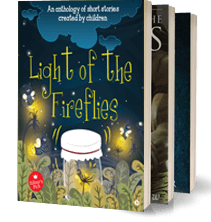
- Discover books
- For Writers
-
For Writers
-
Indie Author Championship
-
Challenges
Writing Contests
- Get Started

"It was a wonderful experience interacting with you and appreciate the way you have planned and executed the whole publication process within the agreed timelines.”
Subrat SaurabhAuthor of Kuch Woh Pal -
-
-
IN
- India
- Singapore
- Malaysia
- UAE
- 0
Dr.S.Azhagu Madhavan
Dr. S. Azhagu Madhavan, M.Sc., PGDBI., PGDCA., Ph.D., He has completed M.Sc., and Ph.D., Zoology from PG & Research Department of Zoology and Biotechnology, A.V.V.M. Sri Pushpam College (Autonomous), Poondi – Thanjavur Dt., Tamilnadu, India. ResearchDr. S. Azhagu Madhavan, M.Sc., Ph.D., his Ph.D from A.V.V.M. Sri Pushpam College (Autonomous), Poondi – Thanjavur DT, Tamil Nadu, India. Worked as a Research Associate in 1½ years, Global Scientific Research Services Ariyalur (DT), Tamil Nadu, his Research group involved in studying the Cell and Molecular signatures with special reference to Bioinformatics & Statistical tools Software knowledge, Plagiarism Removed and Grammarly software, Graphpad 9.0. version, Mendeley, SPSS, NCBI, Origin pro-8 & Gene & Protein Sequence, Multiple Sequence Analysis, Pathway Analysis, DAVID – BioinformaticsRead More...
Dr. S. Azhagu Madhavan, M.Sc., Ph.D., his Ph.D from A.V.V.M. Sri Pushpam College (Autonomous), Poondi – Thanjavur DT, Tamil Nadu, India. Worked as a Research Associate in 1½ years, Global Scientific Research Services Ariyalur (DT), Tamil Nadu, his Research group involved in studying the Cell and Molecular signatures with special reference to Bioinformatics & Statistical tools Software knowledge, Plagiarism Removed and Grammarly software, Graphpad 9.0. version, Mendeley, SPSS, NCBI, Origin pro-8 & Gene & Protein Sequence, Multiple Sequence Analysis, Pathway Analysis, DAVID – Bioinformatics resources & Tools, Molecular Docking Diabetes Mellitus. Our research integrates physiological and pharmacological techniques to study mechanisms underlying development and progressions of Cancer. Research articles 56 published in peer reviewed journals (Elsevier, Taylor & Francis, Springer, SCOPUS, Web of Science, UGC care I, II) and. He received International Young Scientist Award, 7th International Scientist Awards on Engineering, Science and Medicine in 2020. Serving Membership Board in 12 journals (Web of Science & UGC care I, II) Editor Associated/Assistant Board member in 49 journals; published 7 Test Books and 9 Book Chapters published (SCOPUS), presented research findings in 44 papers in International & National conferences/workshop/National seminar.
Read Less...Crop your profile image

COVID -19 CLINICAL FEATURES
Books by Dr. S. Azhagu Madhavan
Coronavirus pandemic
has intensely affected the worldwide network. The COVID-
19 virulent disease cause by the SARSCoV- 2 has been an
extraordinary global health challenge. Through the
24,193,010 globally disturbing 216 countries and 826,141
deaths, because of August 27, 2020. In India, there are
3,310,234 cases with 60,472 deaths. Given the
unprecedented magnitude of the pandemic’s impact on
health and economy, therapies
Coronavirus pandemic
has intensely affected the worldwide network. The COVID-
19 virulent disease cause by the SARSCoV- 2 has been an
extraordinary global health challenge. Through the
24,193,010 globally disturbing 216 countries and 826,141
deaths, because of August 27, 2020. In India, there are
3,310,234 cases with 60,472 deaths. Given the
unprecedented magnitude of the pandemic’s impact on
health and economy, therapies for COVID-19 are being
actively investigated, and there are quite 1000 treatment
and over 173 vaccine trials taking place worldwide,
including 31 candidate vaccines in clinical evaluation and
142 in pre-clinical evaluation. As of late, the antiviral
specialist’s remdesivir and favipiravir, which act by
repressing viral replication, have been endorsed for
COVID-19 treatment in seriously sick patients by the
Government of India.
CHEMISTRY OF BIOMOLECULES
Books by Mr. S. Azhagu Madhavan
This Book It is a great pleasure to present the of Chemistry of Biomolecules to our beloved teachers and students. The main framework of the book has been retained, without much changes, new additions have been made, some portions. Few teachers wanted that the university question types added at the end. To quote, "I suggest that short type of questions should be included at the end of each in future edition of the book." We have included the same in the topics
This Book It is a great pleasure to present the of Chemistry of Biomolecules to our beloved teachers and students. The main framework of the book has been retained, without much changes, new additions have been made, some portions. Few teachers wanted that the university question types added at the end. To quote, "I suggest that short type of questions should be included at the end of each in future edition of the book." We have included the same in the topics pertaining to MBBS. We feel confident that this edition will fulfil the requirement of the undergraduate students recommendations and also meet the needs and expectations of postgraduate students of Biochemistry. As the book is clinically oriented, it will be of much help to PG students of other disciplines, viz. Pathology/medicine/pediatrics, etc. Colour printing has been used to make the book more attractive, easy recording and highlighting the important portions like Clinical Aspects/Significance and Biochemistry Importance. The overall objective of the book has been to provide concise yet authoritative coverage on the basics of Biochemistry with clinical approach to understand the disease processes. The important points in the text to be remembered by the students have been highlighted in bold and italicised prints. We do not claim to the perfect.
AGRICULTURE ENTOMOLOGY COLLECTION AND PRESERVATION OF INSECTS
Books by Mr. S. Azhagu Madhavan
Agriculture Entomology Collection and Preservation of Insects. Gathering techniques might be partitioned into two general classifications. In the primary the gatherer effectively look out the creepy crawlies, utilizing nets, suction apparatuses, beating sheets, or whatever mechanical assembly suits their specific needs. Killing Jars or Bottles Powerful gathering of bugs and related gatherings for the most part necessitates that the examples be murdered s
Agriculture Entomology Collection and Preservation of Insects. Gathering techniques might be partitioned into two general classifications. In the primary the gatherer effectively look out the creepy crawlies, utilizing nets, suction apparatuses, beating sheets, or whatever mechanical assembly suits their specific needs. Killing Jars or Bottles Powerful gathering of bugs and related gatherings for the most part necessitates that the examples be murdered so that they may be appropriately mounted and considered. The most generally opening containers to embed or expel examples, isn't believed to reault in any changeless damage. Every single slaughtering specialist are to some degree dangerous to human wellbeing. At particular morphological characters. It is surprising how quickly even a limited study of entomology leads to the ability to assign specimens to Families; then you become motivated to track down some you don’t recognise, and your knowledge progressively increases! I have ventured to write this book and hope the readers will find it very informative and enjoyable to read.
BIODIVERSITY ROLE ON AGRICULTURE ENTOMOLOGY
Books by Mr. S. Azhagu Madhavan
This Book Biodiversity Role on Agriculture Entomology. It is primarily about those insects that matter to agriculturists, horticulturists and foresters because the insects either attack their crops and livestock, are potential natural enemies of those that do, or are important pollinators.But I also include species that matter to humans in general because they attack them,transmit diseases or produce valuable or marketable substances. Also I include mitesas &l
This Book Biodiversity Role on Agriculture Entomology. It is primarily about those insects that matter to agriculturists, horticulturists and foresters because the insects either attack their crops and livestock, are potential natural enemies of those that do, or are important pollinators.But I also include species that matter to humans in general because they attack them,transmit diseases or produce valuable or marketable substances. Also I include mitesas ‘honorary insects’ in attacking plants in similar ways.Insecticides and today’s synthetic fertiliserswere not very widely used and hand labour was available for crop cultivation, includingsowing and weed control; there were different crops, and the crops grown todayare quite different varieties and often sown at different times. You will find quite a lotof anecdotes in this book giving examples of such changes in pest status. Somethingelse that changes and rather more frequently is the Latin name given to a species andthe classification of the relevant insect Order. Readers with some knowledge of entomologymay be brought up short, as I was, by some of the recent changes in insect taxonomy;it is a strange outcome of Linnaeus’s invention of binomial Latin names that these arenow sometimes less useful for communication than the English common names, ofwhich very few by comparison change with time!This book concentrates on the entomology of the ‘insects that matter’.
INTRODUCTION TO SMALL AND NON- SMALL LUNG CANCER PATIENTS
Books by Mr. S. Azhagu Madhavan, Dr. S. Ganesan, Dr. M. Mahadevi
This Book Introduction to Small and Non- Small Lung Cancer Patients Worldwide, the annual number of new cases of lung cancer is estimated at more than one million and is expected to increase to ten million in 2025. Fortunately, the political efforts to reduce the use of tobacco are getting increasing attention in many countries and the Statistics are now showing the first positive results. Among the epidemiologic changes we also see a change in the histopathol
This Book Introduction to Small and Non- Small Lung Cancer Patients Worldwide, the annual number of new cases of lung cancer is estimated at more than one million and is expected to increase to ten million in 2025. Fortunately, the political efforts to reduce the use of tobacco are getting increasing attention in many countries and the Statistics are now showing the first positive results. Among the epidemiologic changes we also see a change in the histopathologic pattern, with a relative decrease in squamous cell carcinoma and a rise in adenocarcinoma. Lately, important new information as regards the biology of lung cancer is emerging, including new treatment approaches. The result is a slow, but steady improvement of the overall management of lung cancer based on an increasing use of combined modality therapy, consisting of surgery, chemotherapy, and radiotherapy applied concurrently or sequentially in early stage disease. Furthermore, new techniques are gaining ground, both within surgery and radiotherapy and targeted medical therapy is being offered to more and more patients. Delivery of National Health Service cancer care has improved. Despite these improvements, lung cancer remains a scourge worldwide, with a poor outlook that is clearly related to smoking habits. Improving treatments and care will not replace, but reinforce the need for concerted worldwide tobacco control.

Are you sure you want to close this?
You might lose all unsaved changes.
Select from one of our global stores to continue
 India
India
 Malaysia
Malaysia
 Singapore
Singapore
 UAE
UAE
Warning Message
The items in your Cart will be deleted, click ok to proceed.















